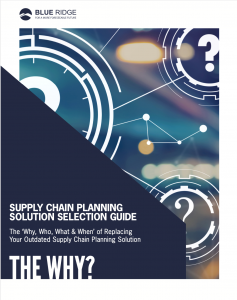Planning for a Supplier Shutdown: Here’s What Distributors Can Do
 “History repeats itself, but in such cunning disguise that we never detect the resemblance until the damage is done.” — Sydney J. Harris
“History repeats itself, but in such cunning disguise that we never detect the resemblance until the damage is done.” — Sydney J. Harris
With the challenging business climate introduced by the Coronavirus pandemic, we are seeing some businesses and governments maneuver in ways that are reminiscent of World War II—governments closing borders, citizens rationing supplies and, perhaps the most notable indicator of these challenging times, businesses conforming their production to support supply of critical materials.
As it pertains to the world of wholesale distribution, companies must always keep a close eye on the moves their suppliers are making—and the global economic climate that influences those decisions.
The Best Plan is to Have One
As we delve deeper into the pandemic, it’s important for companies to have a strategy that accounts for planning for a supplier shutdown. That strategy could be sourcing a similar item from a similar organization, conducting a forward-buy to stockpile inventory to continue to meet demand, or something else. Whatever it is, there has never been a more crucial time to have an action-ready, executable plan.
This is Not the Time to Bring a Knife to a Gun Fight
NOW is about being nimble… it’s about having visibility and agility to make solid business decisions for your future. The best way to execute on your plan is to get a first-class supply chain planning solution in place. Not spreadsheets. Not some cobbled-together ERP module retrofitted to your process.
Get a real supply chain planning system built with low-cost cloud features that allow you to plan and execute on your strategy with great speed and precision.
At a time like this, supply chain planning solutions are a need, not a want.
These solutions break down data silos and align your business to react faster to changes in the macro-economy such as a supplier shutdown – among many other benefits.
Most importantly, being nimble allows you to operate on leaner inventories to free up cash. Plenty of distributors in our customer base can attest; it’s times like these where having the right tool is non-negotiable.
Some Possible Strategies
Alternative Sourcing
There's confirmation that international supply is relatively not an issue, even during the peak of the crisis in Italy, where some 70% of the country’s trade is moved on ships. Still, it may be a good idea to have a domestic source in your back pocket (and pay a premium for it), as the international shipping channels become clogged with demand and resources become strained.
The difference between how well companies execute on this lies in:
- The information available to make decisions and
- The capability of the team to execute on those decisions
Service Level Adjustments
Many of our customers are combatting supplier shutdowns by playing with their service levels. But be sure there’s science behind those decisions.
Your supply chain planning solution can help you simulate what an increase or decrease in service levels for certain items means to your profitability. If done the right way, the first time, this can result in the most optimum profitability in a time where many are at the whim of uncontrollable circumstances.
A professional service team to coach, educate and influence the users of this solution is necessary to control the quality of information—both inputs and outputs.
Speculative Buys
The data might also prompt you to look into a forward buy / pre-emptive buy to capitalize on inventory investment before global prices rise. Perhaps a supplier is running a discount on a product that you want to optimally take advantage of, or you need to capitalize on an incoming supplier shutdown or tariff.
An advanced supply chain planning system helps ensure smart forward buys by incorporating the things that are important to your business—profitability, service levels, etc.—and making recommendations so you can make the choice that is best for your business. While still possible to be done in Excel or an ERP, the process is much more labor intensive—and it’s hard to be sure that you are making the best decision possible.
Learn More
PODCAST: How to Create a Culture for Innovative Forward Buying
BLOG: Tariffs and Inflation: A Good Time to Forward-Buy Inventory?



Comments are closed.